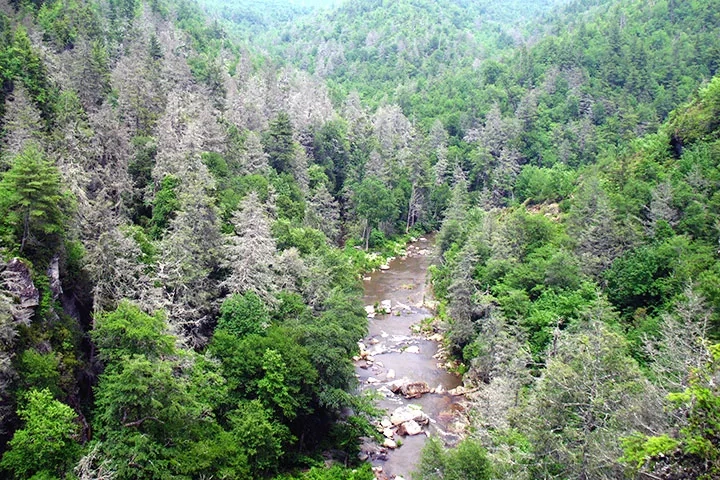Sap-sucking insects called hemlock woolly adelgids are killing off hemlock trees in the eastern U.S.
These tiny bugs first arrived from Japan in the 1950s and have since spread from Georgia to Maine. In the last 10 years, they heavily damaged the southern Appalachian Mountains in North Carolina and Tennessee.
During the next decade, areas with severe infestations may see up to 90% of hemlock trees die. Cold winters help kill these invasive insects but, due to climate change, winters are getting warmer. The trees also tend to grow in stream valleys in cooler high-elevation areas and along the north-facing slopes of mountains.
Steve Norman is an ecologist with the U.S. Forest Service. With the support of NASA's Applied Sciences Program, he and his colleagues use a software program called ForWarn. It is a Normalized Difference Vegetation Index (NDVI). It monitors the insects' destructive impact by generating near-real time maps of vegetation changes in the continental United States. Norman and his colleagues use those maps to plan for insect infestations and to help protect hemlock forests.
More information available at the Earth Observatory story: Sap-sucking Bugs Threaten Hemlock Forests




